Efest LUSH Q2 Charger 2017



This is a simple dual cell mains powered LiIon charger without any settings.




It arrived in a small cardboard box with specifications on it.

The box included the charger, a mains cable, a warranty card and the instruction sheet.

The charger has a mains socket for power and is universal power (100-240VAC 50/60Hz).
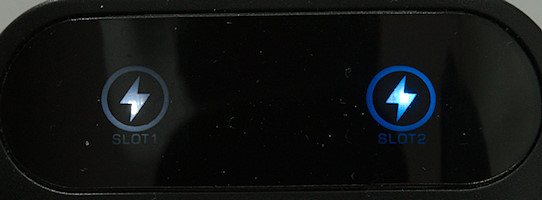
The only user interface is a led light for each channel, white when charging and blue when finished.

Specifications are on the bottom, but not very easy to read.


The slots uses the classical slider construction and it works fine.
The slots can work from 27.5 mm to 70mm. This means that it will handle most 18650/26650 batteries, except the longest ones.


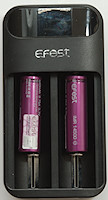
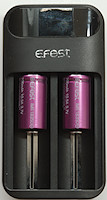
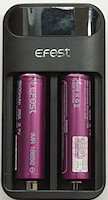
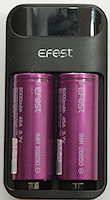

The charger can handle 70 mm long batteries including flat top cells.
The charger current is on the high side for regular small cells, but close to acceptable for IMR batteries
Measurements
- When not connected to power it will discharges with about 8mA.
- When power is connected with a full battery, the charger will discharge with 0.05mA
- Below 0.55V the charger will not detect a battery
- Between 0.55V and 2.75V the charger will charge with about 170mA to 200mA
- Above 2.75V the charger will use regular charging.
- When one cell is full, the other will be charged with the full current.
- Charger will restart when voltage drops slightly.
- It will restart charging on reinsertion of the battery or power cycling.
- Power consumptions when idle without battery is 0.17 watt
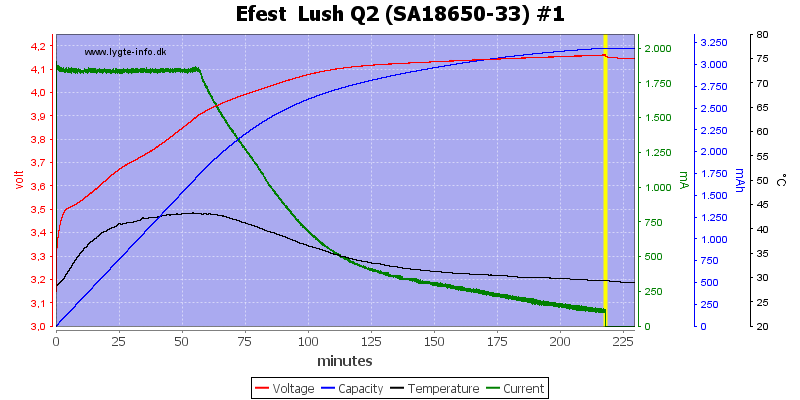
The charger has a nice CC/CV voltage curve with termination around 100mA.
With one battery the charge current is about 2A.
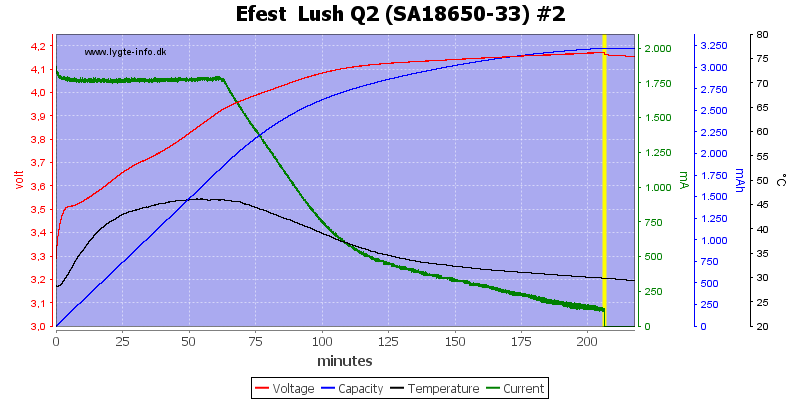
The second slot is the same.
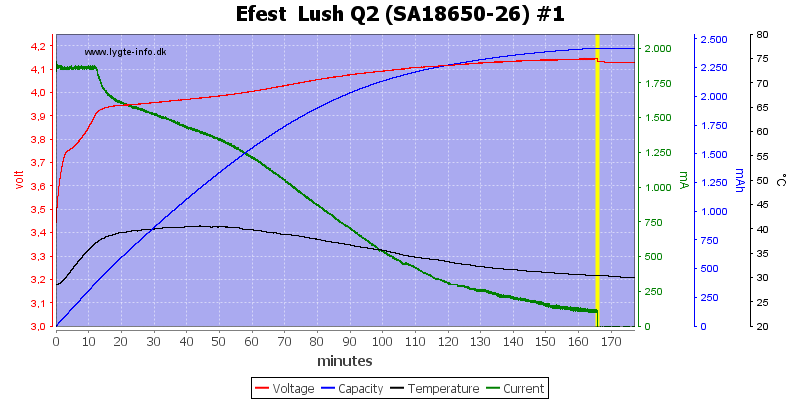
Nice charge curve and termination.
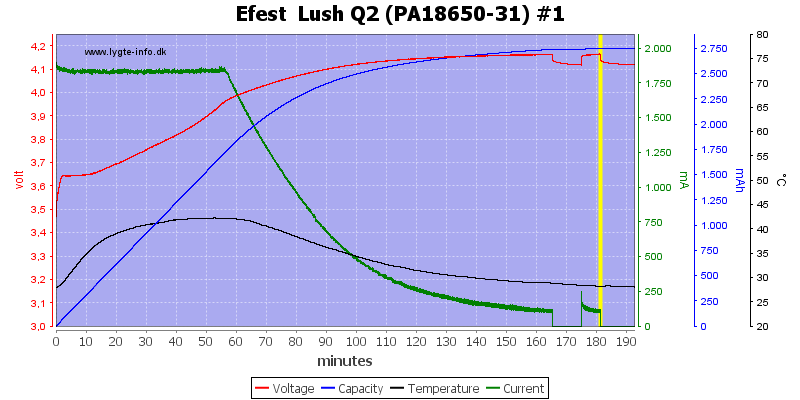
This cell has enough voltage drop for the charging to restart, but only at a slow frequency.
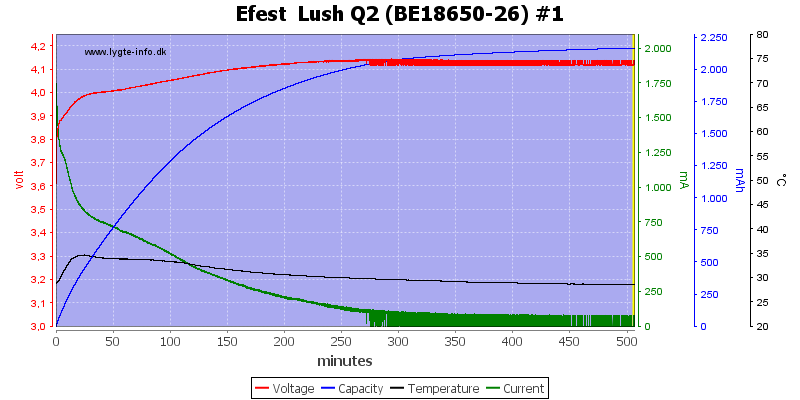
With a older battery the charger stops, but restart again when the voltage drops, i.e. the termination do not work very well.
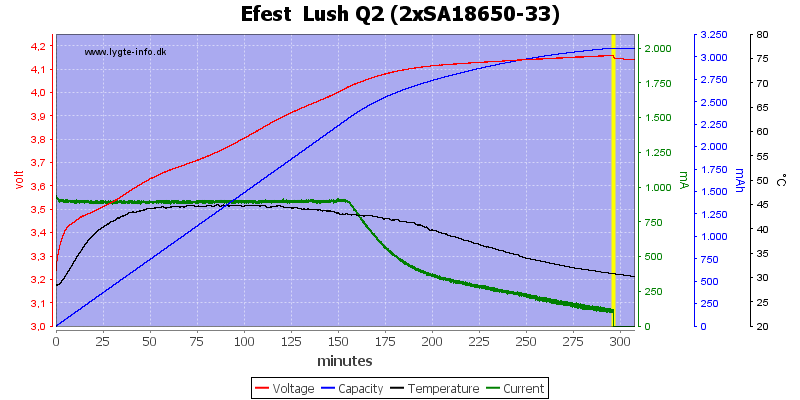
With two batteries the current will be reduced to 1A.
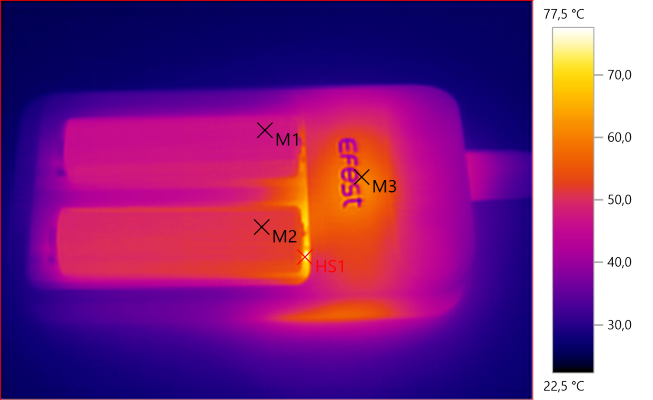
M1: 47,0°C, M2: 51,1°C, HS1: 77,5°C
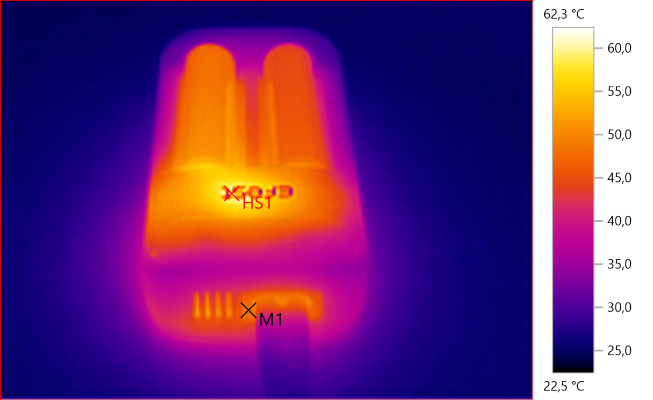
M1: 48,0°C, HS1: 62,3°C
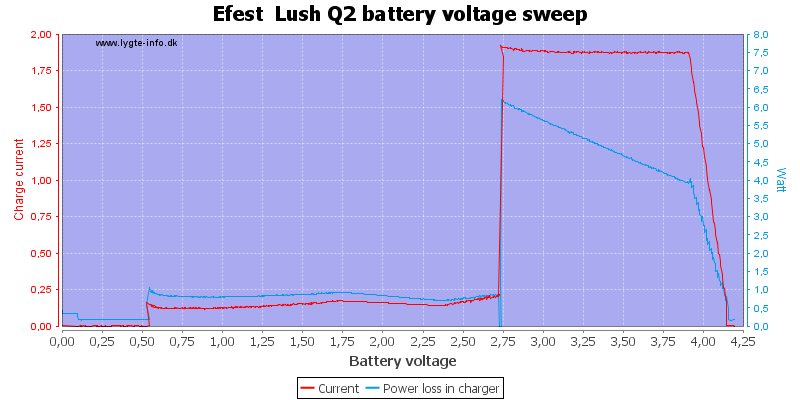
Sweeping the battery voltage from zero to 4.25 shows charge current at the different charge levels.
I did also add a curve to show how much heat is generated in the charger, most of the time the voltage will be between 3.5V and 4V, i.e. a bit above 4 watt.
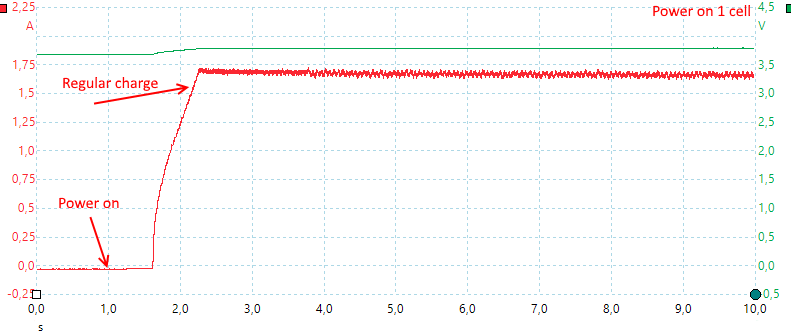
The charger is very fast at starting.
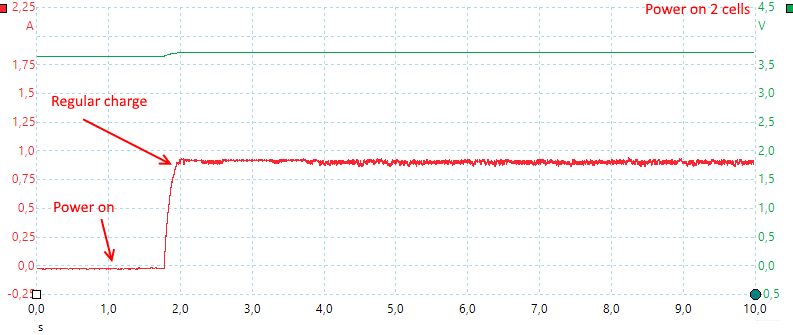
Also with two batteries.
Testing the power supply with 2830 volt and 4242 volt between mains and low volt side, did not show any safety problems.
Conclusion
The charger uses a rather high current and it has problems terminating with old batteries.
I will rate it fairly good for IMR batteries, but only acceptable for other LiIon batteries, due to the termination.
Notes
The charger was supplied by Efest for review.
Here is an explanation on how I did the above charge curves: How do I test a charger






























